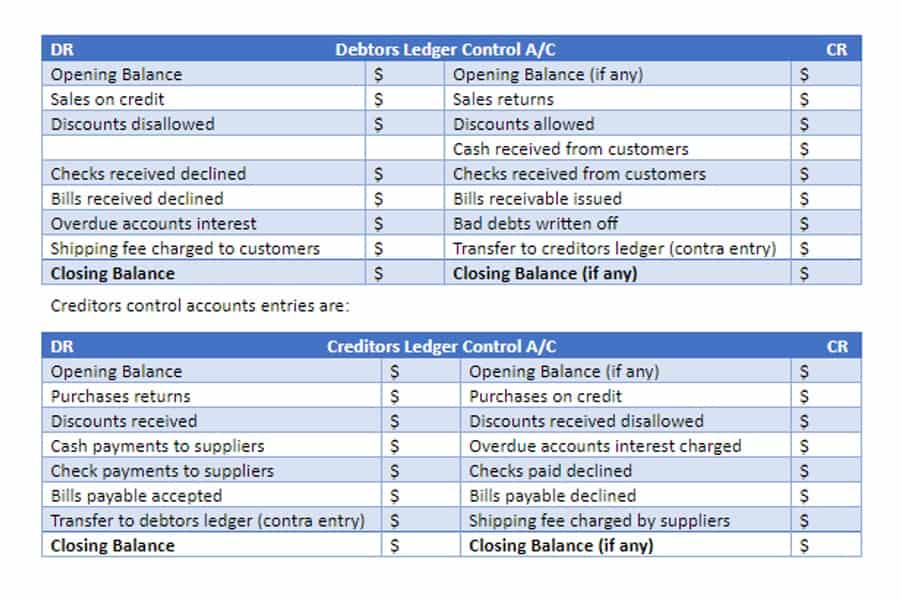If you write a check for $1,500, but you have only $1,000 in the bank, it will bounce when the payee tries to cash it because you don’t have enough funds to cover the amount written on the check. At the time Brenda writes the check, she believes she has enough money in her account to cover it. However, she forgets about an automatic bill payment of $1,200 scheduled to be deducted from her account the next day.
If the maker has an overdraft protection agreement with its bank, then the bank will lend the shortfall to the maker, so that no checks will bounce. A rubber check, also known as a bounced check or a returned check, is a check that is rejected by the bank upon presentation for payment due to insufficient funds in the payer’s account. Essentially, when someone writes a rubber check, it means that the check bounces back and cannot be honored by the bank. As a courtesy to his long-term customer, Steve decides to wait 30 days before cashing ABC’s checks, since typically they would have taken about 30 days to pay his invoices electronically. To his surprise, however, Steve finds that the checks given to him by ABC were actually rubber checks. Each time he tries to cash them, the checks fail either for lack of funds or because stop-payment orders were placed by ABC after the checks were rendered.
The reason the check is not paid is the maker’s account had insufficient funds or not sufficient funds (NSF). Instead of the check being paid, it will be returned (or bounced back) through the banking system. Because the check was bounced back by the bank, the check is described as a rubber check. Banks aren’t required to notify an account holder when a check they signed bounces due to non-sufficient funds.
“The most common reason for a check to bounce is when there are insufficient funds to cover the check amount,” says Salvador Gonzalez, accounting and management professor at Walden University. Steve is the manager of a wholesale distribution company which sells to various retail outlets throughout his local community. One of his regular customers is ABC Retailers, which recently experienced a change of ownership. Since their sale, ABC’s new owners have begun paying their invoices by check instead of electronically.
How to avoid writing a bad check
A bounced check may result in overdraft fees, restrictions on writing additional checks, and negative impacts to your credit score. Writing too many bounced checks may also prevent you from paying merchants by check in the future. Many merchants use a verification system called TeleCheck to help them determine if a customer’s check is good.
Besides NSF or overdraft fees charged by your bank, the payee might penalize you, too. The landlord who got the rubber check for your monthly rent could charge you a penalty. A rubber check is a check that is not paid (or honored) by the bank on which it is drawn.
What is a Rubber Check?
If a rubber check is not redeposited by the payee, the payee must also reduce its general ledger cash account for the amount of the check (and also debit another general ledger account). Writing a paper check to make a payment is safer than carrying around lots of cash. But if a check bounces, it can be expensive and awkward, especially if you know the payee. Learn the meaning of rubber check in finance and how it affects your financial transactions. Consumers in this situation may have to apply for a second-chance checking account until they can qualify for a traditional account.
- If you write a check for $1,500, but you have only $1,000 in the bank, it will bounce when the payee tries to cash it because you don’t have enough funds to cover the amount written on the check.
- A rubber check is a check that is not paid (or honored) by the bank on which it is drawn.
- As a result, the recipient does not receive the funds they were expecting, and both the issuer of the check and the recipient might be charged fees by their respective banks.
- As a courtesy to his long-term customer, Steve decides to wait 30 days before cashing ABC’s checks, since typically they would have taken about 30 days to pay his invoices electronically.
- This situation typically occurs when an individual makes a payment using a check, but their bank account does not have sufficient funds to cover the payment amount.
However, some banks may offer options for customers to enroll in/sign up for in order to be notified of overdrafts. A bounced check is sometimes called a “rubber check.” There are other factors that cause checks to bounce, but lack of funds is the most common one. If you have a history of bounced checks, unpaid fees and forced account closures, https://www.quick-bookkeeping.net/what-is-a-favorable-variance-what-it-means-for/ your ChexSystems report will reflect that. If you’re late with a payment, such as to a utility or lender, because the check bounced, you’ll likely be charged a penalty, especially if it’s not your first time. Financial institutions such as credit card companies often forgive penalties for established customers with excellent payment histories.
If there isn’t enough money in your account to back the check, the landlord doesn’t receive your payment. Bounced checks and penalty fees can snowball quickly and put an account holder in a financial hole, so it’s important to get your finances under control as quickly as possible. In some cases, if you write a check without enough money in your account to cover it, your bank might decide to cover the amount for you. However, the bank will then charge you an overdraft fee, which is $26.61 on average, according to Bankrate’s study.
How long does it take for a check to bounce?
When the size or frequency involved becomes sufficiently large, individuals who routinely write rubber checks may find themselves faced with criminal charges. In the United States, doing so deliberately can be viewed as a form of fraud, which in some states is classified capital gains vs. dividend income as a felony offense. This example demonstrates the repercussions of a “rubber check” for both the issuer and the recipient. It underscores the importance of maintaining a clear understanding of one’s finances and ensuring funds are available before writing checks.
Other approaches, such as accruing interest on the amounts unpaid, are also used. Remember, knowingly writing checks without sufficient funds can lead to legal repercussions. It’s always better to be safe than sorry when it comes to managing your finances.
While inadvertent rubber checks are generally left unpunished, systems are in place to detect willful or repeat offenders. Through databases such as TeleCheck and ChexSystems, banks and other financial service providers can monitor the frequency with which a given person or company issues rubber checks. As a result, those flagged as suspicious through these systems may find that merchants and payment processors begin to turn down their checks. A “rubber check” is colloquial slang that refers to a check that is “bounced” or returned by a bank due to insufficient funds in the account of the person or entity who wrote the check. When a check “bounces,” it means that the bank will not honor the check’s amount because there isn’t enough money in the account to cover it. Different banks charge different fees for bounced checks and overdrafts, but as of 2022, the average overdraft fee was $29.80.





